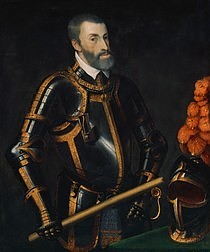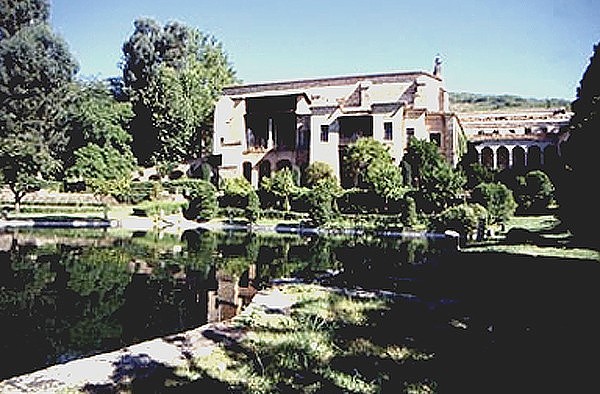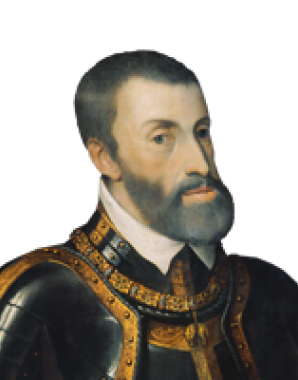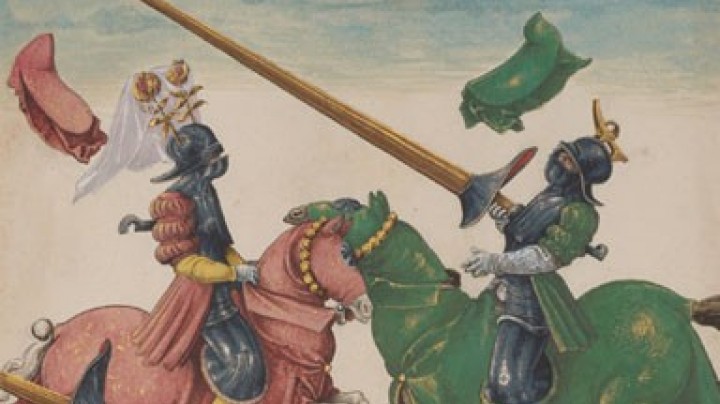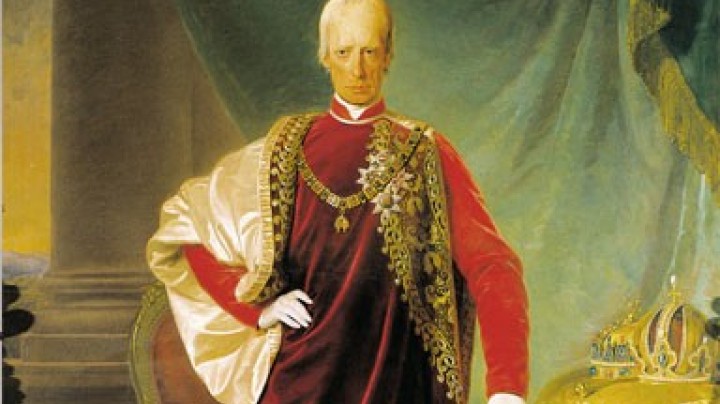Charles V and the vision of universal monarchy
In 1556, at the age of 55, Charles, then the most powerful man in the world, Holy Roman Emperor and ruler of the global Spanish Empire, decided to lay down his crown and abdicate all his offices.
Charles V on his conception of imperial office…I sought the imperial crown not in order to rule over a multitude of kingdoms but merely to ensure the welfare and prosperity of the country and my other kingdoms, and to preserve peace and concord in the whole of Christendom… To this purpose have I made many arduous journeys and have been compelled to wage many wars… but never wantonly, always very much against my own will. … I had great hopes – only few have been fulfilled and few have remained to me, and at the cost of what travails! This has made me sick and weary. Do not think that I seek to avoid any travails or perils; my powers no longer suffice. Place your trust in my son, be united, observe justice at all times and do not let unbelief appear in your midst…
In the person of Charles, the Habsburgs attained the status of a Great Power for the first time. Extending over several continents, his dominions were referred to by contemporaries as the empire ‘on which the sun never set’.
The basis of his power was Spain: uniting in his person for the first time the crowns of Castile, Navarra and Aragón, Charles was the first king of Spain as a unified whole. His dominions also included the kingdoms of Naples, Sicily and Sardinia together with the Netherlands as part of the Burgundian inheritance.
Charles is also associated with the beginnings of the Spanish colonial empire in South and Central America. During his rule the destruction of the ancient American civilisations together with the exploitation and enslavement of indigenous peoples reached its zenith. The orders that Charles issued to the conquistadors and missionaries from his distant throne in Europe that enjoined them to protect the native population and to convert them to Christianity using convincing arguments rather than force remained – given the brutal reality – nothing more than half-hearted attempts to provide moral justification for the Spanish conquest of the Americas.
For a short time Austria too belonged to Charles’s global empire. On the death of his grandfather Maximilian I in 1519 Charles had inherited the Austrian patrimonial lands. However, in 1521/22 he transferred his dominion over these Central European dynastic territories to his younger brother Ferdinand, the founder of the Austrian line of the Habsburgs.
Faced with this enormous increase in power, Charles soon developed the vision of a universal monarchy spanning the globe. The only element that was lacking to ensure his claim to hegemony in Europe was the title of emperor. Charles’s rivals for the imperial succession were Francis I of France and Henry VIII of England. In June 1519 the electors voted at Frankfurt for Charles as king, the prerequisite step to attaining the imperial title. Nevertheless, Charles’s lofty ambitions were confronted with a thoroughly mundane problem: lack of money. The electors expected to be rewarded for their votes. Charles’s election campaign was mainly funded by the Fugger merchant family, subsequently making the emperor financially dependent upon them. Charles V was also the last emperor to be crowned by a pope, his coronation being performed by Clement VII at Bologna.
Charles’s claim to the leading role in the concert of powers was not uncontested: France became the ‘hereditary enemy’ for the next two centuries. A powerful adversary arose to the east in the shape of the Ottoman Empire. In a late continuation of the Spanish Reconquista against the Moors, Charles pursued campaigns in North Africa, leaving his brother Ferdinand to resist the inexorable expansion of the Turks in the Balkan territories.
Although Charles saw himself as a defender of Christianity, it was during his reign that the unity of the Roman Catholic Church finally collapsed due to his underestimating the power of the Reformation within the empire. This was not solely a question of theology but a political trial of strength between the emperor and the princes of empire who were insisting on their privileges and independence. Charles’s claim to universal rule is also evident in his attempts to solve the confessional conflict. The emperor wanted to effect a radical reform of the Church and saw himself as an impartial arbiter seeking to preserve the unity of Christendom. However, in this he failed entirely: the schism had become reality.
Throughout his rule Charles struggled with the contradiction between his claim to universal power and the difficulty of actually implementing this dominion in the various different parts of his vast empire. Charles was forced to be constantly on the move to compensate for the lack of an efficacious modern administrative apparatus. A not unimportant factor in his failure was the nature of communications at that time: strung out over whole continents, his monarchy had become ungovernable.
Charles also had to battle with the resistance of regional forces in Spain, the Netherlands and within the empire to a universal, supranational Habsburg monarchy. Eventually he abandoned his hopes, accepting the unfeasibility of the undertaking. The office of Holy Roman Emperor passed to his brother Ferdinand and the Spanish crown to his son Philip. Even within the dynasty it was no longer possible to prevent power being split between several different lines.
The emperor’s last refuge was the Hieronymite monastery of Yuste on the uplands of the Estremadura south-west of Madrid. The Order of St Jerome was an eremitic community devoted to an ascetic and solitary life as the path to finding God. Charles spent his last two years at Yuste, incapacitated by various ailments, in particular gout. Riddled with pain, he had to be carried about in sedan chairs or on litters. While Charles did not enter the order, he lived within the monastic community and had a small palace in the Italian style with eight rooms built adjoining the monastery. His bedchamber shared a connecting door with the sanctuary of the monastery church, making it possible for Charles to follow Mass from his bed even when he was virtually immobilized by his gout.
Following his death in 1558 the emperor’s mortal remains were initially interred beneath the altar of the monastery church. Later on his son Philip II had his coffin transferred to the pantheon of the Spanish kings in the palatial monastery of El Escorial. Yuste monastery was destroyed during the Peninsular war and abandoned. In 1958, to mark the fourth centenary of Charles’s death, it was restored and given back to the Order of St Jerome. Today the Hieronymites at Yuste continue to preserve the memory of the emperor who came to grief with his vision of universal monarchy.
